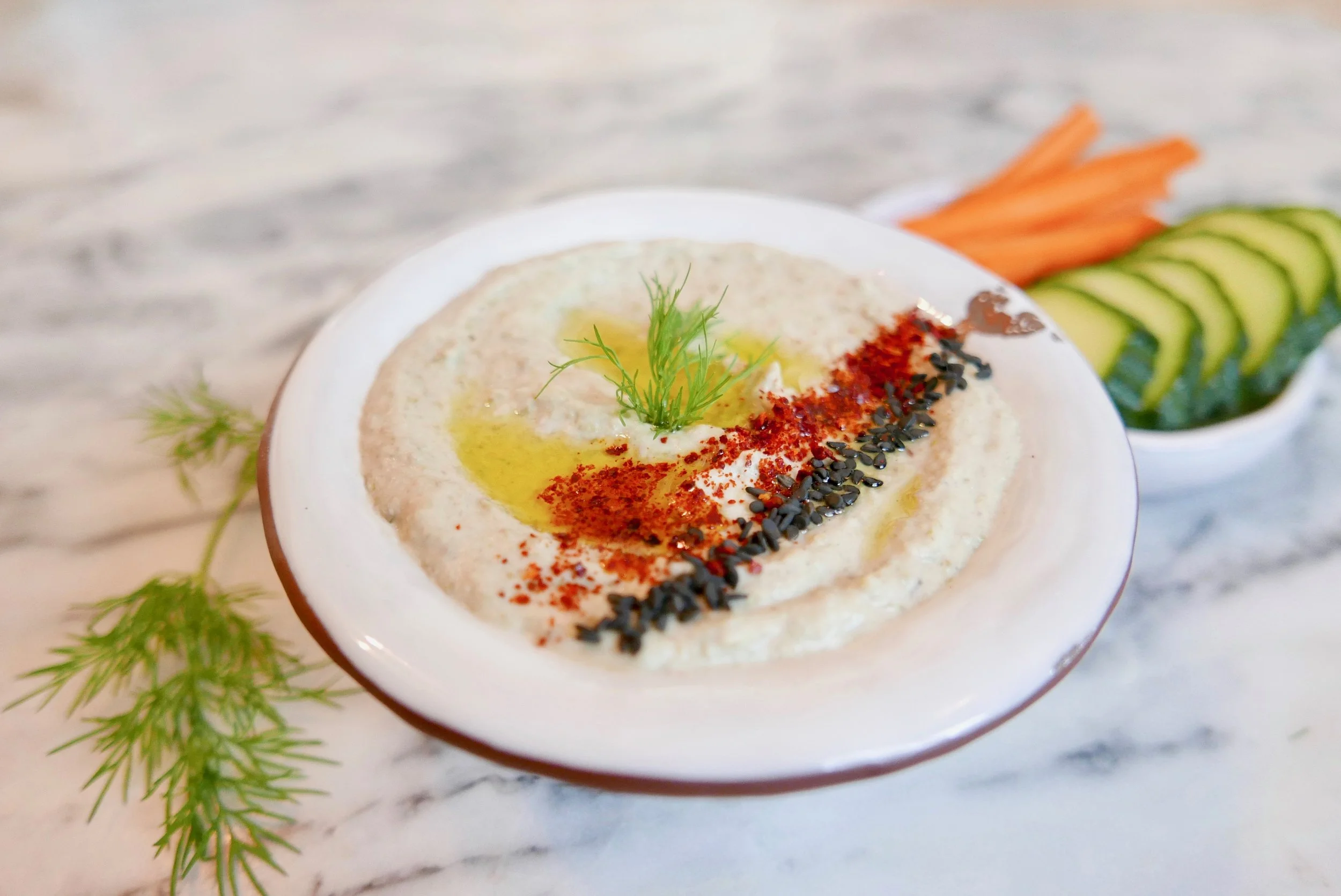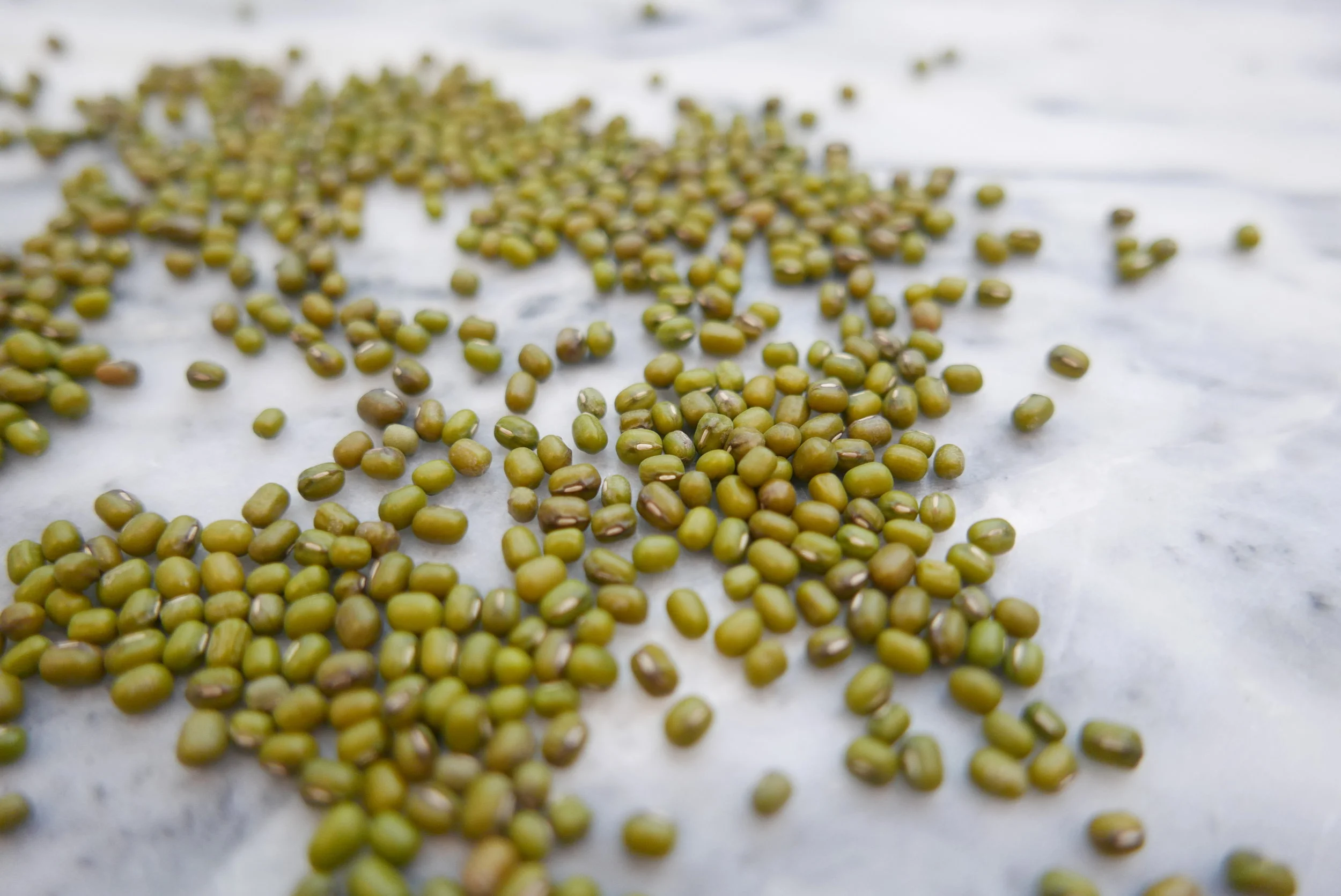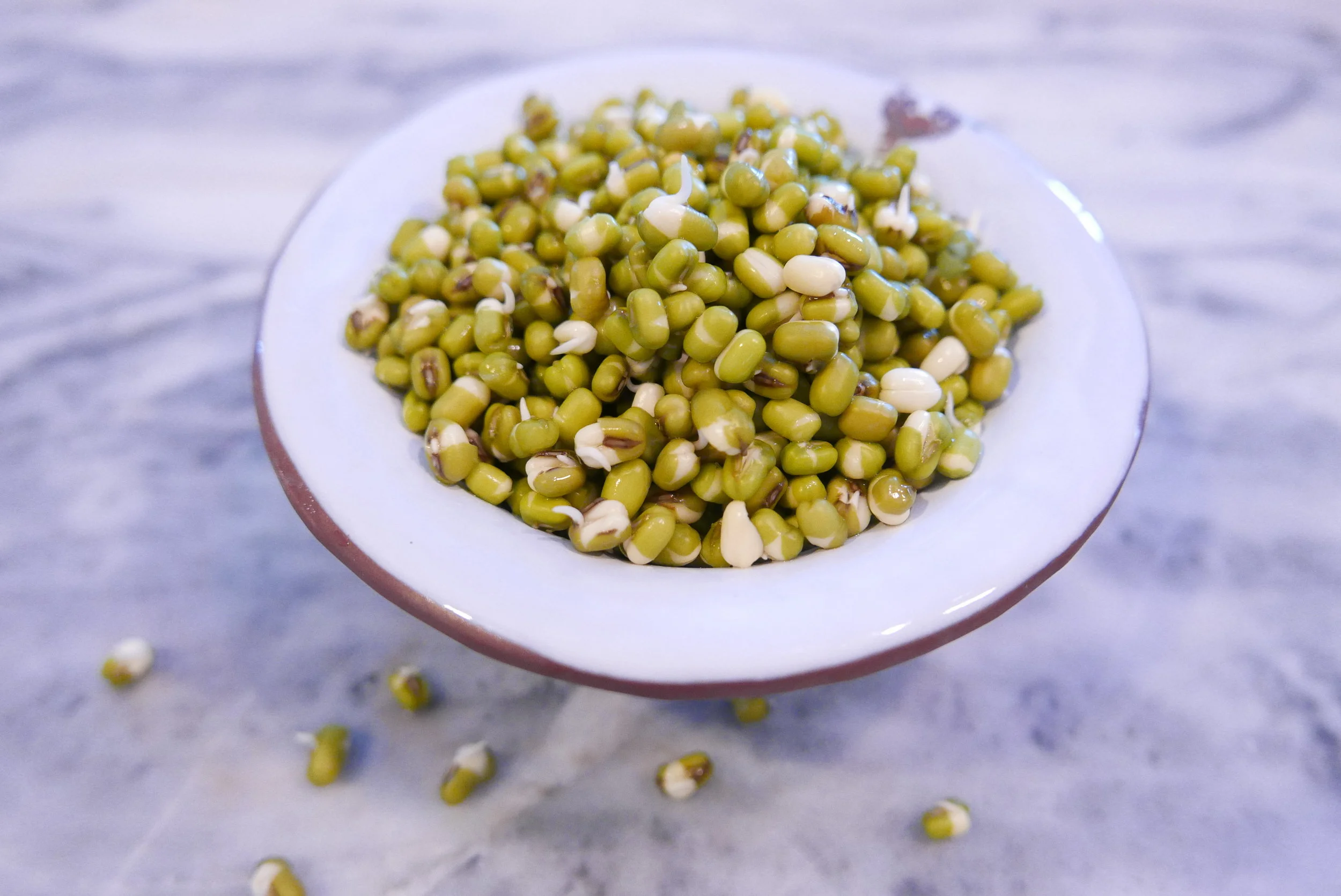Mung Bean Hummus
I don’t know about you, but hummus was all the rave this summer. Whether I was on the boat, at someone's house for cocktails, or just hanging around with family, hummus was always the preferred snack. I’ll be honest, I didn’t partake in the hummus eating frenzy because I don’t really like most brands, and everyone I know buys it instead of taking the time to make it themselves. Store-bought brands all seem to have the same underlying flavor that I can’t put my finger on. I almost want to say it’s vinegar, but that’s not in the typical recipes I’ve seen. This makes me wonder whether it could be an added preservative. Who knows. Anyhow, I don’t like the typical hummuses I find. So, I decided to make my own version.
This week I set out to complete a 7-day detox, and I'm currently on day 4, which is only the second day where food is included. I’ve been craving something creamy, so I decided to make, you guessed it, hummus! The issue is the only bean I’m allowed to have is mung. So I gave it a try, and I’m so delighted with the result.
Mung Beans
These tiny green legumes are like a cross between lentils and peas. They have similar properties, such as being a great source of protein, fiber, phytonutrients, and antioxidants. Also known around the world as moong, marsh, or gram, these beans are mainly found in India, Nepal, Sri Lanka, and other South and Southeast Asian countries.
Nutritional Benefits of the mung are pretty impressive. They’re a great source of magnesium, potassium, folate, and vitamin B6. One of the best features is that they’re gas-free! Yes, this means you can eat them without taking Beano. Not that I’ve ever tried that stuff. I don’t recommend it either, who knows what’s in it…
Mung beans were considered a cherished food and a form of medicine in ancient India, since roughly 1500 B.C. In Ayurvedic medicine, these beans are considered ‘tri-doshic,’ meaning they work for all body types when cooked properly. They have many culinary uses which include soups, fritters, and dahl. I love them as hummus, which is why I decided to share this recipe with you below.
Preparation & Avoiding Damage
In all traditional cultures, beans were soaked and always cooked. Be sure to start all bean cooking preparations with a good soaking. This deactivates the antinutrients which include phytic acid. Phytic acid blocks mineral uptake by binding to minerals such as calcium, magnesium, iron, and zinc so that they cannot be absorbed in the body.
Some people have enough enzymes in their gut to break down the phytic acid, called phytases, but most don’t. Furthermore, there are other antinutrients in legumes that need to be deactivated before consumption. Some of these include gluten, enzyme inhibitors, tannins, and lectins.
Mung Bean Hummus
Ingredients:
1 1/2 cups cooked mung beans
3 Tbsp tahini
1/2 lemon
1/2 cup water
1-2 cloves garlic
1/8 tsp cumin
white pepper to taste
salt to taste
Instructions:
Soak mung beans overnight & cooked as indicated on the bag/box. Let cool.
In a large bowl, ad tahini, lemon juice from half lemon, water, garlic, cumin, pepper, and salt.
Use a blender or food processor to blend well.
Serve with some fresh cut veggies or pile on top of avocado or toast. Options are endless, just use your imagination!




